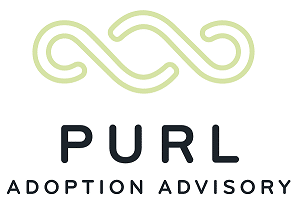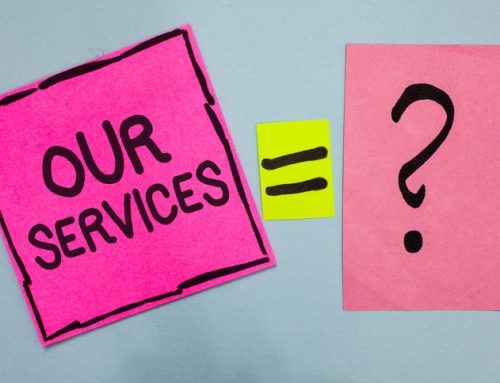
Adoption can be a long and difficult journey, but it’s important to understand the current state of domestic infant adoption in the US. In this blog post, Adoption Advisor and mother of one child through adoption, Kelcie Grace, shares the hard truths about the imbalance between prospective adoptive families and expectant parents considering adoption, the types of crisis situations that lead people to consider placing their child for adoption and the increasing issue of in-utero substance exposure in domestic infant adoptions. Join Kelcie Grace as she guides you through the challenges and realities of domestic infant adoption.
When it comes to domestic infant adoption, many prospective adoptive families find themselves waiting for a long time to bring a child into their home. Here are a few hard truths about the current state of domestic infant adoption that contribute to this wait:
There is no need for more prospective adoptive parents in domestic infant adoption
The current reality of the domestic infant adoption world is that there are FAR more prospective adoptive families than there are expectant parents considering adoption and even fewer expectant parents that choose to place their child for adoption than there were previously. Birth rates in the US continue to trend down. There is no need for more prospective adoptive parents for domestic infant adoptions. If you are pursuing adoption to “help children in need” you may want to spend some time reconsidering your reasons. Be honest with yourself, it is okay to want to add to your family, but recognize that the need exists for foster parents in the foster system (particularly for older children), not in domestic infant adoption. Because there is such an imbalance between the number of prospective adoptive parents and the number of expectant mothers considering adoption, prospective adoptive parents’ adoption preferences, otherwise known as what they are open to in their adoption journey, are that much more important now to the timing and success of that family in domestic infant adoption.
The people choosing adoption are in some type of crisis, and many prospective adoptive parents are not open to the crisis circumstances
The people contemplating an adoption plan for their child are typically in some type of crisis situation, which could be long term or short-term crisis. If it is a short-term crisis, the adoption professional should be helping the expectant parents to find resources that will enable them to parent their baby through and after that crisis, if that is what they want. If it’s not short-term or if the expectant parent is certain that adoption is the best plan for their child the professional can move forward in helping the expectant parent with an adoption plan. Contrary to popular belief, the idea that most domestic infant adoptions are teen girls becoming pregnant and choosing to place their baby for adoption so that they can go to college or pursue other avenues is just not accurate. Typically, it is more extreme circumstances that lead a person to consider placing their child for adoption. We are seeing drug addiction, homelessness, extreme poverty, mental illness, Child Protective Service involvement with previous children, and lack of family support systems as some of the reasons people make an adoption plan. Other reasons include domestic violence, rape or incest, and incarceration.
In-utero substance exposure is just one crisis we see in domestic infant adoption
In-utero substance exposure is extremely common with the drug crisis in our country! This is particularly true with White expectant mothers, where we are currently seeing the most in utero exposure and addiction. If you are not open to adopting a child who has been exposed to substances like methamphetamines, heroin, opioids, and/or fentanyl in-utero, you will see fewer cases, even fewer if you are also more limited on the race of the child you’re open to adopting. Many expectant parents struggle with addiction due to childhood trauma and genetic predisposition to substance use disorders. If an expectant parent uses substances at any point in their pregnancy their child will be exposed to these substances while they are still in the womb. The short and long-term impacts of in-utero substance exposure vary based on the substances used, the length of time of the use, the frequency of use, and the stage of fetal development during which the exposure occurs. While it is important for prospective adoptive families to do their due diligence to understand the risks associated with in-utero drug exposure, researching these impacts can be challenging for a number of reasons. One of the main challenges is that the effects of different substances on fetal development can vary significantly. This means that what one substance does to a fetus is not the same as what another substance does to a fetus. And this does not take into account poly-substance use (when a person uses multiple drugs). Additionally, not all pregnant people who use substances are willing to participate in research studies on this topic, which can make research results harder to generalize. Finally, the research that has been done on this topic does not often follow adopted children removed from the environment where the exposure occurred, so it is difficult to know the long-term impacts of in-utero substance exposure on children who are taken out of the traumatic environment in which they were born. We wrote a blog post about in-utero substance exposure, you can read it by clicking here.
Being gender specific in your adoption will SIGNIFICANTLY impact the timeline of your adoption
Another hard truth about adoption is that being gender-specific can significantly cut down on the number of potential adoption cases you will see. If you are only open to adopting a girl or only open to adopting a boy you will see less than half the cases you would see if you were open to adopting either a boy or a girl. Many adoption professionals won’t even work with you if you’re gender specific. We wrote about this in a previous blog post that you can find here.
Openness to transracial adoption requires more education/preparation
Being open on race and ethnicity can be important, but it is also important to be aware that more and more expectant parents of color are specifically looking for diverse families to parent their children (and rightfully so). This means that White families may not be chosen by expectant parents of color as often as families of other races and ethnicities. Being open on race and ethnicity requires a family to fully examine their own biases and prejudices and consider the diverse representation in their community. Check out our blog post on the importance of racial mirrors here.
The prospective adoptive parents may need a new/better profile book
Another reason a prospective adoptive family may still be waiting to be matched is that their profile book may not be successfully connecting with expectant parents. A profile book that is too long or too short may not be as effective as one that is the right length, we typically recommend a book be between 8-16 pages. Additionally, if the profile book text is too lengthy, it may be overwhelming for an expectant parent who is likely reviewing a large stack of profile books. The amount of text should complement the number of images not overwhelm or overpower the images throughout the book. Profile books should feature many high-quality images and photos that really showcase your personality. Low-quality and blurry images, particularly photos with sunglasses or hats, or photos looking away from the camera make it harder for an expectant parent to connect with the family. A well-crafted profile book can be an important tool for a prospective adoptive family to make a strong impression on expectant parents and help them stand out from other adoptive families. We wrote a blog post about the all-important profile book, click here to read it.
The prospective adoptive family may not be the type of adoptive family typically sought after
Some families way wait longer than others because certain types of families are more requested by expectant parents than others. We see that families or couples under 40 without children are asked for more often than families with children, in particular families without biological children. Some expectant mothers like the idea of what is a difficult situation for them leading to something positive for a family that is unable to conceive a child. As previously mentioned, diverse families are often requested by expectant mothers of color therefore generally shortening the wait time for families where one or more of the parents are of color or their children are of color.
The cost of domestic infant adoption can be prohibitive to many prospective adoptive families
Adoption costs have also skyrocketed in recent years, and a prospective adoptive parent’s budget can greatly impact the wait time for prospective adoptive families. Factors such as inflation and the housing crisis have contributed to this increase in the cost. There is a growing number of expectant parents who are facing unstable housing and are forced to live in extended stay hotels during their pregnancy in order to avoid houselessness. This trend has placed a financial burden on these expectant parents, which in turn has led to higher costs for prospective adoptive families paying living expenses while the expectant parents are pregnant. We are seeing costs of adoption averaging around $41,000, but we have seen adoptions ranging between $14,000 and $70,000. While the total costs of adoption can be offset with the adoption tax credit, grants, loans, and fundraising, it is important to be aware that a lower budget will impact the number of opportunities you are able to consider. You can learn more about the cost of the adoption process in our recent blog here.
Purl families are usually chosen within one year of going active in our model, but it is based on adoption preferences and LUCK!
At Purl, our families typically are chosen by an expectant parent within a year of being active with us, but this timeline is significantly dependent on the family’s preferences, and on the family’s makeup (age, whether they have kids, where they are located, their budget, openness to various things). The more open and flexible a family is in their preferences, the more cases they will be able to present to, therefore the more likely they are to be chosen by an expectant parent and bring a child into their family sooner. It is important to acknowledge, however, that there is an element of luck involved in the matching process. Some families may match with an expectant parent within days, while others may take much longer. This process can be unpredictable and it is not a reflection of the prospective adoptive family’s worth or desirability. Every adoption journey is unique and the most important thing is finding the right match for the expectant parents, the child, and the prospective adoptive family. Remember, it only takes one “yes”.
Understand that you can control your adoption’s timeline by expanding your preferences, and the strategy, preparation, and education offered by Purl
Take the time to consider your adoption preferences and educate yourself on the current state of adoption. If you created your own profile book, consider hiring a professional to design a profile book. Though these truths about the current state of adoption can be hard to hear, they are important to understand. Purl Adoption Advisory can provide professional support to help you plan and navigate, and be more successful, in the adoption process. Contact us for support as you embark on your adoption journey.

Adoption can be a long and difficult journey, but it’s important to understand the current state of domestic infant adoption in the US. In this blog post, Adoption Advisor and mother of one child through adoption, Kelcie Grace, shares the hard truths about the imbalance between prospective adoptive families and expectant parents considering adoption, the types of crisis situations that lead people to consider placing their child for adoption and the increasing issue of in-utero substance exposure in domestic infant adoptions. Join Kelcie Grace as she guides you through the challenges and realities of domestic infant adoption.
When it comes to domestic infant adoption, many prospective adoptive families find themselves waiting for a long time to bring a child into their home. Here are a few hard truths about the current state of domestic infant adoption that contribute to this wait:
There is no need for more prospective adoptive parents in domestic infant adoption
The current reality of the domestic infant adoption world is that there are FAR more prospective adoptive families than there are expectant parents considering adoption and even fewer expectant parents that choose to place their child for adoption than there were previously. Birth rates in the US continue to trend down. There is no need for more prospective adoptive parents for domestic infant adoptions. If you are pursuing adoption to “help children in need” you may want to spend some time reconsidering your reasons. Be honest with yourself, it is okay to want to add to your family, but recognize that the need exists for foster parents in the foster system (particularly for older children), not in domestic infant adoption. Because there is such an imbalance between the number of prospective adoptive parents and the number of expectant mothers considering adoption, prospective adoptive parents’ adoption preferences, otherwise known as what they are open to in their adoption journey, are that much more important now to the timing and success of that family in domestic infant adoption.
The people choosing adoption are in some type of crisis, and many prospective adoptive parents are not open to the crisis circumstances
The people contemplating an adoption plan for their child are typically in some type of crisis situation, which could be long term or short-term crisis. If it is a short-term crisis, the adoption professional should be helping the expectant parents to find resources that will enable them to parent their baby through and after that crisis, if that is what they want. If it’s not short-term or if the expectant parent is certain that adoption is the best plan for their child the professional can move forward in helping the expectant parent with an adoption plan. Contrary to popular belief, the idea that most domestic infant adoptions are teen girls becoming pregnant and choosing to place their baby for adoption so that they can go to college or pursue other avenues is just not accurate. Typically, it is more extreme circumstances that lead a person to consider placing their child for adoption. We are seeing drug addiction, homelessness, extreme poverty, mental illness, Child Protective Service involvement with previous children, and lack of family support systems as some of the reasons people make an adoption plan. Other reasons include domestic violence, rape or incest, and incarceration.
In-utero substance exposure is just one crisis we see in domestic infant adoption
In-utero substance exposure is extremely common with the drug crisis in our country! This is particularly true with White expectant mothers, where we are currently seeing the most in utero exposure and addiction. If you are not open to adopting a child who has been exposed to substances like methamphetamines, heroin, opioids, and/or fentanyl in-utero, you will see fewer cases, even fewer if you are also more limited on the race of the child you’re open to adopting. Many expectant parents struggle with addiction due to childhood trauma and genetic predisposition to substance use disorders. If an expectant parent uses substances at any point in their pregnancy their child will be exposed to these substances while they are still in the womb. The short and long-term impacts of in-utero substance exposure vary based on the substances used, the length of time of the use, the frequency of use, and the stage of fetal development during which the exposure occurs. While it is important for prospective adoptive families to do their due diligence to understand the risks associated with in-utero drug exposure, researching these impacts can be challenging for a number of reasons. One of the main challenges is that the effects of different substances on fetal development can vary significantly. This means that what one substance does to a fetus is not the same as what another substance does to a fetus. And this does not take into account poly-substance use (when a person uses multiple drugs). Additionally, not all pregnant people who use substances are willing to participate in research studies on this topic, which can make research results harder to generalize. Finally, the research that has been done on this topic does not often follow adopted children removed from the environment where the exposure occurred, so it is difficult to know the long-term impacts of in-utero substance exposure on children who are taken out of the traumatic environment in which they were born. We wrote a blog post about in-utero substance exposure, you can read it by clicking here.
Being gender specific in your adoption will SIGNIFICANTLY impact the timeline of your adoption
Another hard truth about adoption is that being gender-specific can significantly cut down on the number of potential adoption cases you will see. If you are only open to adopting a girl or only open to adopting a boy you will see less than half the cases you would see if you were open to adopting either a boy or a girl. Many adoption professionals won’t even work with you if you’re gender specific. We wrote about this in a previous blog post that you can find here.
Openness to transracial adoption requires more education/preparation
Being open on race and ethnicity can be important, but it is also important to be aware that more and more expectant parents of color are specifically looking for diverse families to parent their children (and rightfully so). This means that White families may not be chosen by expectant parents of color as often as families of other races and ethnicities. Being open on race and ethnicity requires a family to fully examine their own biases and prejudices and consider the diverse representation in their community. Check out our blog post on the importance of racial mirrors here.
The prospective adoptive parents may need a new/better profile book
Another reason a prospective adoptive family may still be waiting to be matched is that their profile book may not be successfully connecting with expectant parents. A profile book that is too long or too short may not be as effective as one that is the right length, we typically recommend a book be between 8-16 pages. Additionally, if the profile book text is too lengthy, it may be overwhelming for an expectant parent who is likely reviewing a large stack of profile books. The amount of text should complement the number of images not overwhelm or overpower the images throughout the book. Profile books should feature many high-quality images and photos that really showcase your personality. Low-quality and blurry images, particularly photos with sunglasses or hats, or photos looking away from the camera make it harder for an expectant parent to connect with the family. A well-crafted profile book can be an important tool for a prospective adoptive family to make a strong impression on expectant parents and help them stand out from other adoptive families. We wrote a blog post about the all-important profile book, click here to read it.
The prospective adoptive family may not be the type of adoptive family typically sought after
Some families way wait longer than others because certain types of families are more requested by expectant parents than others. We see that families or couples under 40 without children are asked for more often than families with children, in particular families without biological children. Some expectant mothers like the idea of what is a difficult situation for them leading to something positive for a family that is unable to conceive a child. As previously mentioned, diverse families are often requested by expectant mothers of color therefore generally shortening the wait time for families where one or more of the parents are of color or their children are of color.
The cost of domestic infant adoption can be prohibitive to many prospective adoptive families
Adoption costs have also skyrocketed in recent years, and a prospective adoptive parent’s budget can greatly impact the wait time for prospective adoptive families. Factors such as inflation and the housing crisis have contributed to this increase in the cost. There is a growing number of expectant parents who are facing unstable housing and are forced to live in extended stay hotels during their pregnancy in order to avoid houselessness. This trend has placed a financial burden on these expectant parents, which in turn has led to higher costs for prospective adoptive families paying living expenses while the expectant parents are pregnant. We are seeing costs of adoption averaging around $41,000, but we have seen adoptions ranging between $14,000 and $70,000. While the total costs of adoption can be offset with the adoption tax credit, grants, loans, and fundraising, it is important to be aware that a lower budget will impact the number of opportunities you are able to consider. You can learn more about the cost of the adoption process in our recent blog here.
Purl families are usually chosen within one year of going active in our model, but it is based on adoption preferences and LUCK!
At Purl, our families typically are chosen by an expectant parent within a year of being active with us, but this timeline is significantly dependent on the family’s preferences, and on the family’s makeup (age, whether they have kids, where they are located, their budget, openness to various things). The more open and flexible a family is in their preferences, the more cases they will be able to present to, therefore the more likely they are to be chosen by an expectant parent and bring a child into their family sooner. It is important to acknowledge, however, that there is an element of luck involved in the matching process. Some families may match with an expectant parent within days, while others may take much longer. This process can be unpredictable and it is not a reflection of the prospective adoptive family’s worth or desirability. Every adoption journey is unique and the most important thing is finding the right match for the expectant parents, the child, and the prospective adoptive family. Remember, it only takes one “yes”.
Understand that you can control your adoption’s timeline by expanding your preferences, and the strategy, preparation, and education offered by Purl
Take the time to consider your adoption preferences and educate yourself on the current state of adoption. If you created your own profile book, consider hiring a professional to design a profile book. Though these truths about the current state of adoption can be hard to hear, they are important to understand. Purl Adoption Advisory can provide professional support to help you plan and navigate, and be more successful, in the adoption process. Contact us for support as you embark on your adoption journey.



